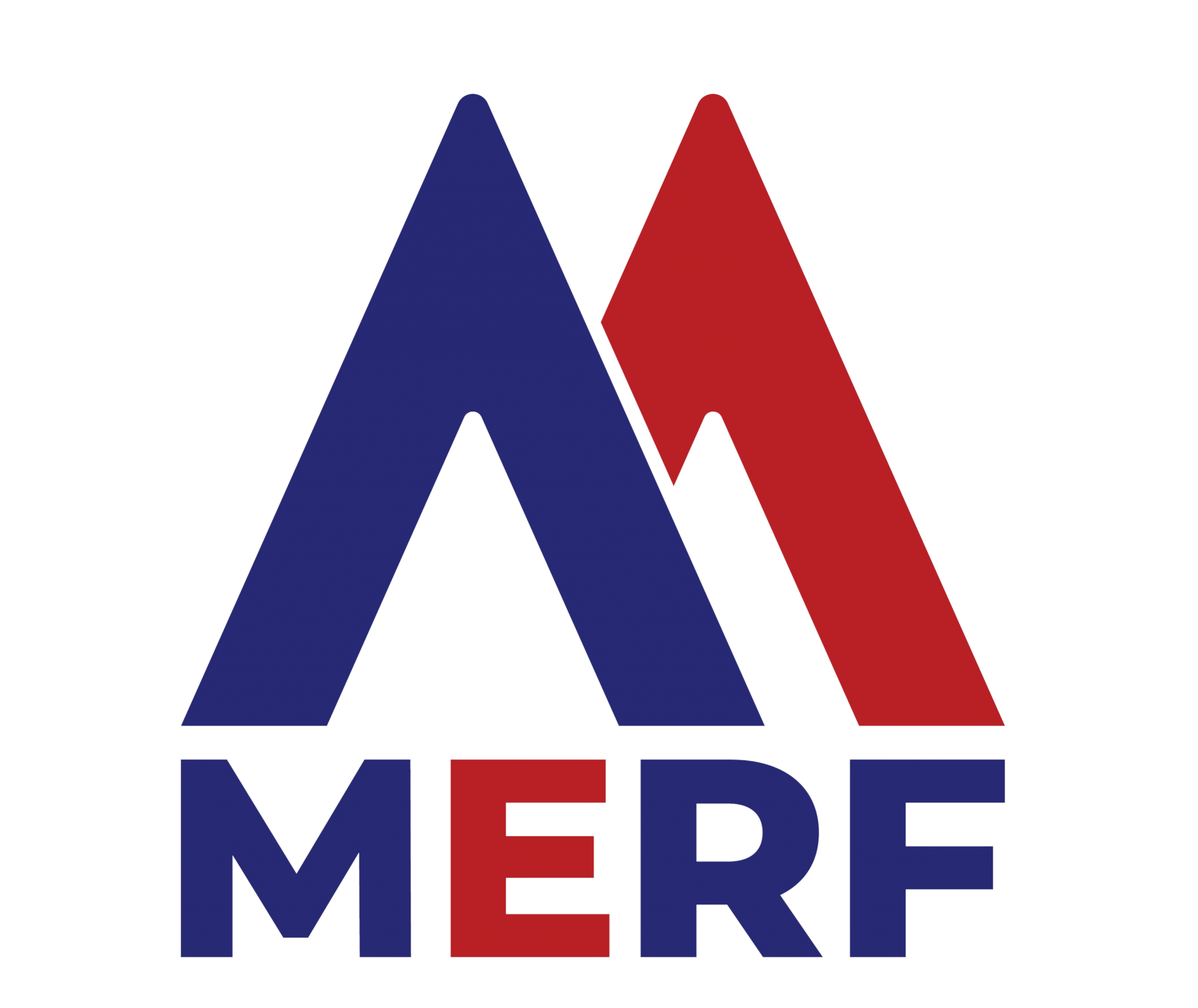Web Development CompanyEngaging, performant websites.
Access the Top Tech Talent instantly. Create polished web apps and websites, from eCommerce sites to content management systems.

500+ companies rely on our top 1% tech talent.





Web Development Services We Provide
Custom Web Application Development
IoT apps. Customer relationship management (CRM) systems. Social networking platforms. Data visualization tools. These are just a few examples of the many types of custom web apps we interact with every day. We deliver a variety of custom web development projects, from enterprise resource planning (ERP) systems to SaaS applications. We use a range of tools depending on the requirements, such as JavaScript, HTML, and CSS for front-end development; Python, Ruby, and PHP for back-end development; and database technologies like MySQL.
eCommerce Development
Create user-friendly storefronts that provide enjoyable shopping experiences. Incorporate payment processing systems, customer service chatbots, checkout systems, and more. Leveraging e-commerce platforms like Magento and Shopify, along with languages and tools such as JavaScript, Python, and Ruby on Rails, our web developers build appealing and intuitive online stores. We also focus on creating easy-to-navigate user interfaces and responsive designs to ensure your site is consistent across devices, including mobile platforms.
Front-End Design & Development
First impressions matter. Since the front end is the part of web development solutions that users can see and interact with, it must be intuitive and engaging. It should provide fast loading times and responsive layouts so users can find everything they need quickly and easily. Our front-end developers and designers collaborate closely with back-end developers to create cohesive websites. We build responsive and accessible user interfaces and use languages and tools like JavaScript, HTML, CSS, Bootstrap, React, and Vue.
Back-End Web Development
Even though the back end of a website is hidden from view, it is central to the web development process. This is the powerhouse of web development—the infrastructure of web solutions. It focuses on the logic, functionality, and database interactions. Using programming languages like Python, PHP, Java, and Ruby and frameworks such as Express.js, Django, and Ruby on Rails, we write the code that runs on the server and devise the logic for a variety of processes. These processes include user authentication, data processing, application functionality, and more. We also focus on database management, server management, and API development.
Content Management System (CMS) Development
Simplify content management. With a robust CMS, you can create, store, and publish digital content without extensive technical knowledge. You can also visualize performance and user interactions to inform your business strategy. We build custom content management systems using a variety of technologies like Visual Studio Code, PHPStorm, phpMyAdmin, and Postman. We also customize and enhance the functionality of existing platforms like WordPress, Joomla, and Drupal with plugins such as Yoast SEO, Views, and VirtueMart.
API Development and Integration
When you access location-based services, make purchases on e-commerce websites, or book flights online, that's all thanks to APIs. Application Programming Interfaces are central to many of the services we use every day, sharing and communicating data seamlessly among apps. We develop and integrate a variety of APIs into your web applications using frameworks such as Express, Django, Ruby on Rails, and ASP.NET Web API. We also rigorously test your APIs with tools like Postman, Insomnia, and SoapUI.
ENGAGEMENT MODELS
HOW WE HELP
Key Facts to Know About Web Development
Web development can be broadly categorized into three main types: front-end development, back-end development, and full-stack development. Each type plays a crucial role in creating and maintaining websites and web applications. Here is a closer look at each type:
Front-end Development
Also known as client-side development, front-end development refers to the creation of the part of the website or web app that the user can see and interact with inside their browser. Developers build user interfaces, optimize UX, and ensure a responsive and easy-to-navigate design. The main languages used in front-end web development are JavaScript, HTML, and CSS.
Back-end Development
Back-end development (also called server-side development) involves building the underlying infrastructure—the part of the website or app that the user can't see or manipulate. This infrastructure consists of the server, application logic, and databases. Front-end and back-end developers collaborate closely so that both aspects of the application function together seamlessly. Key programming languages for building the back end include Python, PHP, Java, and C#. JavaScript is also applied to the back end when it is used with Node.js.
Full-stack Development
Full-stack development combines both back-end and front-end development. Considered jacks of all trades, full-stack developers work on both sides of a website or application, using a combination of front-end and back-end languages and technologies. Developers who specialize in full-stack development can handle the entire project from start to finish, leveraging their knowledge of both the visible design and underlying components of the app. This versatility allows them to create cohesive and efficient web solutions, bridging the gap between user experience and server functionality.
Specialized Types of Web Development
There are also specialized aspects of web development in addition to front-end, back-end, and full-stack development. Here, we will take a closer look at the different specializations: UX/UI design, DevOps, mobile web development, e-commerce development, CMS development, and web API development.
UX/UI Design
User experience/user interface design isn't precisely an area of development, but it is integral to the functionality of a website or web app. In addition to aesthetics, UX/UI design concerns the overall look and feel of the web app. Using tools like Adobe XD, Figma, InVision, Sketch, and Illustrator, designers conduct research, perform wireframing and prototyping, gather feedback via usability testing, and map user journeys. UI design in particular involves creating an accessible, responsive visual design, graphics, design systems, and styles.
While UX and UI design have several overlapping functions, they are not identical. UX design concerns the entire user journey, while UI design focuses specifically on the visual appeal of the design. In other words, UX lays the groundwork for successful UI. On some teams, these roles are combined into one position, while on others, they are separate but collaborate closely to deliver an exceptional user experience.
DevOps
DevOps, bringing together development and operations, focuses on the tools and processes involved in building, scaling, and deploying web applications. DevOps engineers leverage principles of collaboration and efficiency to deliver high-quality apps quickly.
DevOps engineers should have knowledge of continuous integration/continuous deployment (CI/CD) pipelines, automation tools, Infrastructure as Code (IaC), and cloud platforms. They use this knowledge to shorten development cycles, improve collaboration, and deliver higher-quality web applications.
Mobile Web Development
Mobile web development refers to the development of web applications and websites that are optimized for mobile platforms, including smartphones and tablets. Given today's mobile-first landscape, it has become increasingly important to ensure that web applications are responsive and consistent on mobile devices, along with other platforms like desktop.
When developing web apps for mobile devices, it's important to focus on touchscreen interactivity, accessibility, user-centric design, and performance, along with responsiveness. Developers leverage mobile-specific frameworks like React Native and Flutter to achieve these and other qualities.
E-commerce Development
This subset of web development involves creating online stores and platforms. The process of building and managing these stores requires specialized developers and designers who understand the online retail landscape, digital marketing, and web development. E-commerce platforms should be aesthetically pleasing, as well as navigable, scalable, and user-friendly.
CMS Development
Content management systems (CMS) are the backbone of many organizations' digital presence. CMS development involves building and managing a platform for housing, editing, and publishing different types of content. After the development process, organizations will have systems in place that they can use without the help of a technical expert.
Common CMS platforms include WordPress, Drupal, and Joomla. They can be customized by web developers to produce websites and other digital content.
Web API Development
APIs play an important role in web development. They essentially act as intermediaries between different web apps, enabling them to communicate with each other. Web API development involves building these important protocols to facilitate this data exchange. Developers rely on tools like RESt, GraphQL, and OAuth to build them.
Web developers also leverage third-party APIs to extend the functionality of applications and integrate the software with external services
Responsive web design is important in an increasingly mobile-first landscape. This means creating websites that are consistent and offer an optimal user experience across a wide range of devices, including desktop computers, mobile phones, and tablets.
With the increasing reliance on mobile devices, responsive design is important for ensuring a web app or website is navigable and appealing on a small screen size. This type of design means that the images, layout, and content will adapt to fit this screen size, improving the overall UX.
Responsive design offers additional benefits. For example, mobile-friendly websites typically appear higher in search engine results. Mobile-first development is often a cost-effective approach as well, in contrast to creating different versions of the same site.
Front-end and back-end development are both important parts of the web development process. Each focuses on building a different part of the website or web application. Front-end and back-end developers must collaborate closely in order to build a cohesive product.
Front-end development (client-side development) focuses on the part of the website or app that the user can see and interact with. This involves the layout, visual elements and design, and user interactions. Developers use languages like HTML, CSS, and JavaScript, along with frameworks and libraries like React, Angular, Vue, and jQuery, to develop the structure, style, layout, and interactive elements.
Back-end development (server-side development) concerns the behind-the-scene infrastructure—the server, the apps that run on the server, and the database. This is the part of the website or app that the users can't see. The back end provides the foundation for the front end and facilitates data storage, management, and retrieval. Back-end developers use languages like PHP, Ruby, Python, Java, and .NET; databases such as MySQL, PostgreSQL, and Oracle; and server management tools like Apache, Nginx, and Microsoft IIS.
Essentially, the primary difference between front-end and back-end development is that the client side is about user interactions, while the back end concerns the underlying logic and database interactions. Server-side development ensures that the necessary data is sent to the client side, and front-end developers present that data in an engaging and interactive way.
Full-stack development blends these two specializations. Full-stack developers have the skills to construct both parts of the web app or website.
As mobile device usage has become increasingly ubiquitous, the nature and intricacies of web development have evolved. The changing digital world impacts not only the technical approach to developing, designing, and maintaining websites but also the overall conceptualization and strategy. The approach and process must continue to meet the needs of a mobile-centric audience, as well as the needs of other users.
When accounting for diverse audiences who use a range of devices to access websites, keep these considerations in mind:
- Mobile-first Design: Traditionally, most websites were viewed on desktop computers to a greater extent than they were viewed on mobile devices and tablets. Now, however, more than half of global web traffic comes from mobile devices. In Q1 2023, these devices generated 58.33% of global website traffic. That means that developers need to design websites for smaller screens first before they scale the products for larger screens like those on desktop computers. That way, they can reach different audiences on their preferred devices.
- Performance Optimization: The prevalence of mobile devices also means that performance optimization is even more critical. Mobile devices typically have less computing power and slower internet connections, so developers need to use optimized images and assets using techniques like compression, lazy loading, and the use of stylesheets and scripts to improve load times.
- Responsive Design: To ensure a consistent user experience across devices, developers must apply a range of styling rules based on the different qualities and characteristics of various devices, screen sizes, and resolutions. Responsive design ensures that content adjusts seamlessly to fit any screen size.
- SEO Implications: Search engines like Google now prioritize mobile-friendly websites in their ranking algorithms. Developers should adopt technologies like Accelerated Mobile Pages (AMP) to improve loading times on mobile devices. Ensuring that a website is mobile-friendly can significantly boost its visibility and search engine ranking.
- Accessibility: It's important to ensure that mobile websites, like desktop websites, are accessible to users with different abilities. Developers should consider various interaction modes, such as screen readers, voice controls, and other assistive technologies, to ensure inclusivity.
- Touchscreens: With touch interactions growing in popularity, web designs should accommodate swiping and tapping. Buttons, links, and other interactive elements must be larger and more accessible so users can see and utilize them easily. Gesture-based navigation should be intuitive and responsive.
- Mobile-specific Features: Mobile sites can offer location-specific features like localized content, geo-targeted advertisements, and more using GPS data. Other mobile-specific features include accessing hardware like cameras to scan barcodes or use augmented reality (AR) functionalities.
- Development: Web developers leverage cross-platform tools and frameworks such as React Native, Flutter, and Xamarin to build cross-platform web applications that function seamlessly on both mobile and desktop platforms. Progressive Web Apps (PWAs) are another approach, providing an app-like experience on the web.
- Testing: Various tools help simulate environments to aid developers in testing for real-world scenarios. Tools like BrowserStack, Sauce Labs, and mobile device emulators in web browsers allow developers to test their websites across different devices and operating systems.
- User Behavior: It's also important to think about how users interact with websites on mobile. Mobile users typically interact with websites more frequently on their devices but in shorter intervals. Developers and designers should consider how the features, layout, and content are presented to account for this. Simplified navigation, clear call-to-action buttons, and concise content can enhance the mobile user experience.
This list is not exhaustive, but it does cover the essential details of the growing impact of and need for mobile responsiveness in web development. By accounting for these elements, you can ensure that your website meets the needs of diverse and mobile-centric audiences.
The success of any website or web app depends in large part on the quality of the user experience it provides. UX design takes into account how the user will interact with the product. The goal is to engage and delight the end user. To that end, UX/UI designers need to have that anticipated end user in mind throughout the process.
High-quality UX design will:
- Enhance user satisfaction.
- Improve conversion rates.
- Drive engagement and user retention.
- Build trust in the brand.
- Reduce bounce rates.
- Be intuitive.
- Meet the needs of your target audience.
- Drive retention.
- Set the brand apart from its competitors.
- Reduce costs (upfront investment may be larger, but it should pay off in the long run).
- Solve problems for the user.
- Require fewer redesigns.
- Be inclusive and accessible for users in diverse locations and with different abilities.
- Foster creativity.
- Evolve as the landscape changes.
- Improve SEO through mobile-friendly design.
- Align with and further business objectives.
There are many principles to keep in mind when facilitating stronger UX design to build engaging and effective user interfaces and overall experiences. The objective is not only to create an attractive website but also to focus on its look and feel.
To that end, developers and designers should adhere to the following principles:
- Prioritize the needs and wants of the user at every stage.
- Confirm that the layout and interface are logical and navigable, structured in an intuitive way.
- Create a simple and clean design that isn't cluttered.
- Maintain consistency in terms of elements like fonts, button styles, and more.
- Ensure the design is accessible to users with different abilities through components and features like alt text for images.
- Make the design responsive and mobile-friendly.
- Build an emotional connection through tone and various elements.
- Use clear, compelling language for content to make it easy to read and understand.
- Optimize for performance to improve user satisfaction.
- Create error messages that help the user navigate the site successfully.
- Provide feedback for interactions, such as responses when certain buttons are clicked.
- Test and iterate based on feedback from real users for continuous improvement.
Application Programming Interfaces (APIs) play a critical role in modern web development. APIs are integral to web architecture, providing a structure and means for applications to communicate with and provide information to each other.
Specifically, APIs:
- Facilitate integration and connectivity, defining how systems share data.
- Integrate with third-party services and features, from payment gateways to maps.
- Expand the reach of applications, enabling cross-platform accessibility across web, mobile, and desktop platforms and devices.
- Decouple systems, an important concept in microservices architecture.
- Enable scalability and flexibility.
- Support cloud integration, enabling apps to utilize cloud resources and store and process data in the cloud.
- Foster rapid development by allowing developers to quickly prototype and accelerate development.
- Support access to advanced technologies like AI, ML, and blockchain.
- Enhance applications with new, ready-made features.
- Support modular and organized development and code reusability.
- Boost security, enabling secure data exchange with authentication and encryption mechanisms.
- Control access to applications and systems.
- Provide analytics and insights to facilitate stronger decision-making.
- Enable customization and personalization to improve the user experience.
Our experts have been working alongside in-house teams for over a decade.
- React
- Angular
- Node.js
- Java
- C++
- .NET
- Vue.js
- JavaScript
- Python
- Golang
- React
- Angular
- Node.js
- Java
- C++
- .NET
- Vue.js
- JavaScript
- Python
- Golang
- Swift
- Figma
- Adobe
- C#
- PHP
- iOS
- Android
- Python
- WordPress
- Swift
- Figma
- Adobe
- C#
- PHP
- iOS
- Android
- Python
- WordPress
How to start with Us
Our process. Simple, seamless, streamlined.

Step 1
Join exploration call.
Tell us more about your business on a discovery call. We’ll discuss team structure and approach, success criteria, timescale, budget, and required skill sets to see how we can help.
Step 2
Discuss solution and team structure.
In a matter of days, we will finalize your project specifications, agree on an engagement model, select and onboard your team.
Step 3
Get started and track performance.
Once we’ve agreed on milestones, we’ll immediately get to work. We’ll track progress, report updates, and continuously adapt to your needs.
Frequently Asked Questions (FAQ)
A web development company specializes in designing, developing, and maintaining websites and web applications. Their services typically include front-end, back-end, and full-stack development; web design; website optimization; security; and upgrades and technical support. A web development company may also offer additional services, such as e-commerce solutions, content management systems (CMS), and integration with other digital platforms and tools.
There are many technologies, tools, and languages that are commonly used in web development. Common front-end languages and frameworks include HTML/CSS, JavaScript, and associated JavaScript frameworks and libraries like React, Angular, and Vue. Server-side languages include Python, PHP, Java, and C#. Node.js is also frequently used with JavaScript for backend development, as are frameworks like Django, Ruby on Rails, and Laravel. Web developers also leverage tools like Visual Studio Code, Jest, Selenium, and JMeter for various purposes.
Front-end and back-end development are each critical to the web development process. Front-end development (client-side development) focuses on crafting the part of the website users can see and interact with. Back-end development (server-side development) focuses on building the underlying infrastructure, including the databases, and applications running on the server. These components require different skills, languages, and technologies.
Search engine optimization (SEO) is important for ensuring websites are discoverable in search engines like Google. It's important for visibility, search rankings, and user experience. It also demonstrates the credibility of your site because this is a factor in rankings and helps you gain a competitive advantage by allowing you to stand out in competitive markets. SEO should be integrated into any web development and content strategy from the beginning.
There are a number of important best practices for enhancing web security and protecting against threats. Examples include implementing HTTPS using SSL or TLS certificates, conducting regular security audits, and maintaining secure coding practices and standards. Additionally, running regular software and platform updates can patch vulnerabilities and help guard against attacks.
There are many different types of web development services. Each concerns a different aspect of the digital landscape. Examples include:
- Static website development: Creating simple websites with content that only changes when the developer manually updates it.
- Dynamic website development: Developing websites that have content that changes dynamically without developer intervention.
- Content management system (CMS) development: Building systems for storing, managing, publishing, and analyzing multimedia content.
- Responsive web design: Ensuring that websites adjust to and look consistent across different types of devices.
- Web application development: Developing complex, interactive web apps.
- Web maintenance and support: Updating and providing ongoing support and maintenance, including resolving problems and enhancing security and functionality.
- E-commerce development: Creating online platforms for selling products and services and incorporating features like shopping carts, payment processing, and product catalogs.
- API development and integration: Developing APIs to facilitate inter-application interactions and integrating third-party APIs into systems.
Timeframes for a web development project vary widely depending on factors such as:
- The complexity and size of the web app or website
- The web development process or methodology used, such as agile
- The specific requirements
- The custom features added
The development timeline can range from weeks to many months, depending on these and other factors. Remember to factor in time for updates are the website launch, too.
When you're looking for a web development agency, consider factors like technical skills, portfolio, experience, client testimonials, communication and collaboration styles and methodologies, and your budget. Top web development companies will be able to showcase strong expertise in a variety of web technologies, frameworks, and tools. They will also be able to furnish samples of their work and positive recommendations from clients.
Additionally, take experience in your industry sector into consideration. A web development firm that has worked with similar companies will better understand your requirements, industry trends, challenges, and goals. This often leads to stronger collaboration and alignment.
Website optimization helps improve the speed, performance, and efficiency of a website. This process ensures that a website loads quickly, functions optimally, and provides a seamless user experience. Ultimately, this leads to better engagement, higher search engine rankings, and increased conversions.
A web development company will typically offer optimization, along with other key services like development, design, and upgrades. Their practices may include optimizing images, using efficient coding practices, leveraging browser caching, ensuring the website functions across devices (including mobile), and improving the overall UX.
There are many reasons why you should outsource web development projects to web development companies. For example, you might lack key specializations in-house, and an external web development team will have developers and tech professionals who have them. Additionally, outsourcing web development companies can usually complete your projects in a shorter period of time while you focus on your core business. They also have their own resources and technology stacks, meaning you don't need to invest in additional resources or talent.
The main distinction between web development and software development is that software development is a larger field that encompasses many types of software solutions. Web development is a subset of software development, specifically focused on internet-based applications. The larger category encompasses many other subsets, such as mobile app development.
We employ a number of different practices to ensure that a web solution works seamlessly across both mobile and desktop devices. Chiefly, we leverage responsive design, using flexible layouts, CSS media queries, and images and media that automatically adjust to fit different screen sizes. We also design for mobile first, starting with smaller screens and scaling the design up to fit larger screens. We test on real devices and emulators to ensure functionality.
When preparing for and responding to a data breach, a company should engage information security services to develop an incident response plan, emphasizing quick containment, investigation, and notification. Regular employee training and post-incident analysis with these services are crucial for effective response and prevention of future breaches.
A content management system (CMS) is a software application that allows users to create, customize, manage, modify, and publish digital content. The main benefit of these systems is that users don't need extensive technical knowledge to use them because a CMS typically offers an intuitive interface for adding, organizing, and editing content.
Some popular CMS platforms include WordPress, Drupal, and Joomla. Additionally, some businesses may partner with a web development company to customize their CMS platforms or build bespoke solutions.
Mobile responsiveness is essential in web development. It ensures that a website functions and displays consistently across all devices, including smartphones and tablets. It is important for improving the user experience, boosting search engine rankings, extending reach and accessibility, and increasing conversion rates.
Looking for reliable Website development services?
See how we can help.

